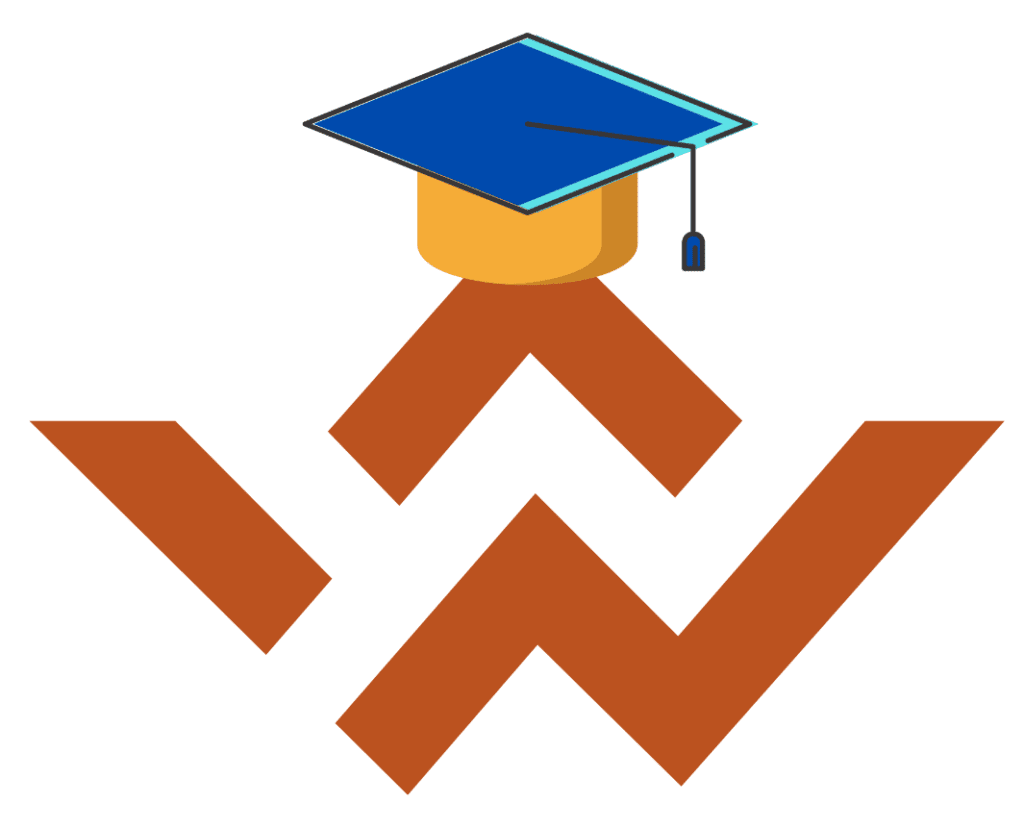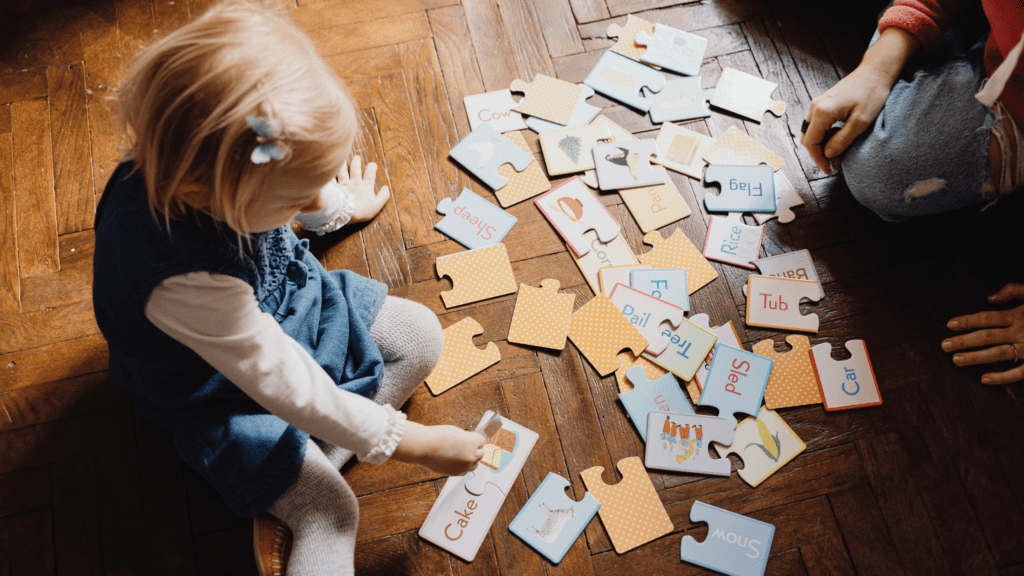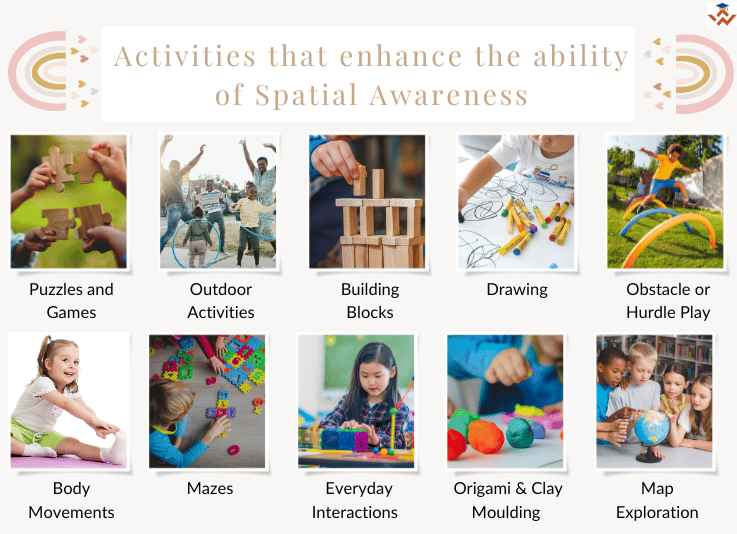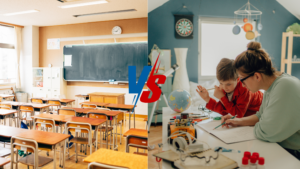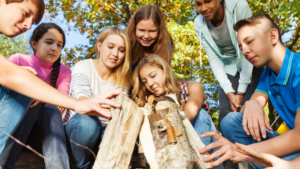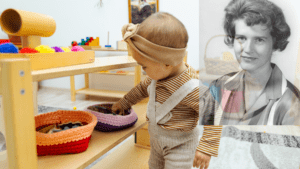Spatial awareness is one of the fundamental abilities that has a big impact on a child’s cognitive development is spatial awareness. Children develop their spatial awareness in a variety of academic and daily life pursuits as they navigate through the physical and cognitive challenges.
The human brain can be classified with 3 broad domains –verbal, numerical and spatial. With reading, writing, and maths practice in classrooms, children tend to develop verbal and numerical ability. Spatial awareness is not practised thoroughly. Studies have shown that spatial ability is crucial for academic success, particularly with STEM subjects (science, technology, engineering, and mathematics).
Parents and educators can help children develop a strong spatial sense by acknowledging its significance, determining a child’s spatial abilities, and introducing fun activities into their daily routine. Here is a complete guide on how to improve spatial awareness in children.
What is Spatial Awareness?
Spatial awareness is the capacity to recognize, comprehend, and manoeuvre through the nearby environment. Interpreting the relationship with surroundings requires a combination of motor skills, cognitive thinking, and sensory input. This awareness is crucial for various activities including simple daily tasks to complex cognitive reasoning. It is necessary to develop strong spatial awareness to enhance physical activities, problem-solving, critical thinking, and academic performance.
For instance, while driving, we use spatial awareness to comprehend the distance between vehicles and navigate traffic. Even in the kitchen, while cooking, we use spatial awareness to coordinate movements, estimate quantities, and manage cooking times. Artists use spatial awareness to create perspective, depth, and proportion in their drawings and paintings.
What is the Importance of Spatial Awareness?
Spatial awareness is the foundation for a child’s overall development. It serves as the foundation for effective interaction with the real world. Children with keen spatial sense often excel in science, maths, and even the arts. It improves their balance, coordination, and sense of direction. This gives them the confidence to move around their surroundings. Here are a few aspects highlighting the importance of spatial awareness.
- Spatial awareness is important for navigating through physical environments, whether driving, walking, or using public transportation.
- Having a good sense of space helps children identify potential hazards and route around obstacles, contributing to overall safety.
- Children with strong spatial awareness often perform better in subjects like mathematics, trigonometry and geometry, where visualisation and understanding spatial relationships is crucial.
- Developing spatial awareness fosters cognitive skills such as problem-solving, critical thinking.
- Spatial awareness is important for organising and optimising space in daily tasks, from arranging furniture to packing a suitcase efficiently.
- It contributes to the ability to visualise and bring creative ideas to life
- Many professions, such as architecture, engineering, and construction, require strong spatial awareness.
- Understanding personal space, body language, and the spatial dynamics of social situations contributes to successful and comfortable interactions with others.
How to Identify a Child’s Spatial Awareness?
Observe a child’s behaviour to identify the spatial ability. Here are some ideas.
- Play Time – A child with good spatial awareness exhibits smooth coordination in activities like catching, throwing, and balancing.
- Drawing and Art – children with good spatial ability demonstrate a sense of perspective, proportion, and spatial relationships in their artwork.
- Building Blocks – Building with blocks and construction toys can provide insights into their spatial skills. Proficiency in solving puzzles, especially those requiring spatial manipulation, suggests a developed sense of spatial awareness.
- Language – Children with strong spatial abilities use terms like above, below, next to or behind accurately in their conversations.
- Navigation – Children following the correct navigation through physical spaces display good spatial ability. They can follow the correct directions, go through narrow paths, and up and down the stairs without hassles.
How To Improve Spatial Awareness Through Activities?
Involve the child in the activities that enhance the ability to perceive, comprehend and manipulate information. Here are some easy to do activities which can help the child improve spatial awareness.
Puzzles and Games
Jigsaw puzzles, tangrams, and board games stimulate critical thinking and enhance spatial awareness. Memory games also help improve spatial ability.
Outdoor Activities
Encourage the child to do cycling, walking, jogging, jumping and other such outdoor activities that need coordination.
Building Blocks
Creating structures and designs with building blocks, Legos, or other construction toys encourage the child for spatial thinking and understanding of three-dimensional space.
Drawing
Sketching and drawing is an activity that not only enhances spatial ability but the fine motor skills too. Encourage the child to draw an object with different perspectives.
Obstacle or Hurdle Play
While going outdoors with the children, create some obstacles or hurdles on the way. Let the child jump or walk across those objects. This activity would help the child comprehend and adapt the spatial challenge.
Body Movements
Involve the child in activities that involve coordination and body awareness, such as dance or yoga. Sports such as soccer, basketball, or tennis challenge spatial thinking.
Mazes
Give the child to solve mazes or navigate through labyrinths. These activities require spatial reasoning and help individuals develop a sense of direction.
Everyday Interactions
While talking with the child, parents and educators can use shapes (circle, triangle, square), distance (near, far), sizes (long, short, thick). Using spatial terms in day to day life promotes spatial awareness.
Origami & Clay Moulding
Working with clay requires three-dimensional material manipulation, which enhances fine motor skills and spatial awareness. For a long time, folding papers has been used to improve mental rotation and spatial ability.
Map Exploration
Maps can be used to make travel plans, locate landmarks, and comprehend larger-scale spatial relationships. Unlike first-hand navigational experience, maps provide spatial information. Through reading maps, children can develop a concrete understanding of multiple large-scale spatial relations among various locations.
Take Away
Enhancing spatial awareness is a dynamic and engaging process. Spatial awareness holds immense benefits across various aspects of life. The consistent incorporation of the activities can help the children sharpen the spatial sense. As we navigate through the intricacies of our environment, the cultivation of spatial awareness becomes a valuable tool. Improving spatial awareness at an early age empowers the children to tackle challenges with confidence.
FAQs
What is spatial awareness, and why is it important?
Spatial awareness refers to our ability to have a clear understanding and perception of the space around us. It means being aware of objects within that space and their relationships to one another. Such awareness plays a key role in a variety of activities, including navigation, motor skills, and overall coordination.
How does spatial awareness impact academic or professional performance?
Spatial awareness has a significant impact on academic and professional performance. It affects the capacity to problem-solve, particularly in fields such as math, engineering, and architecture, where spatial relationships are essential
How can we enhance spatial awareness skills in the children?
It starts by recognizing its significance and actively promoting it through activities that encourage exploration, critical thinking, and hands-on learning. Whether it’s through puzzles, building blocks, or other spatial exercise, there are many ways we can nurture and strengthen their spatial awareness abilities.
Is spatial awareness something that can be developed at any age?
People of all ages can benefit from exercises and activities aimed at enhancing spatial awareness. It also depends on the adaptability of the human brain and its capacity for learning and development over time.
